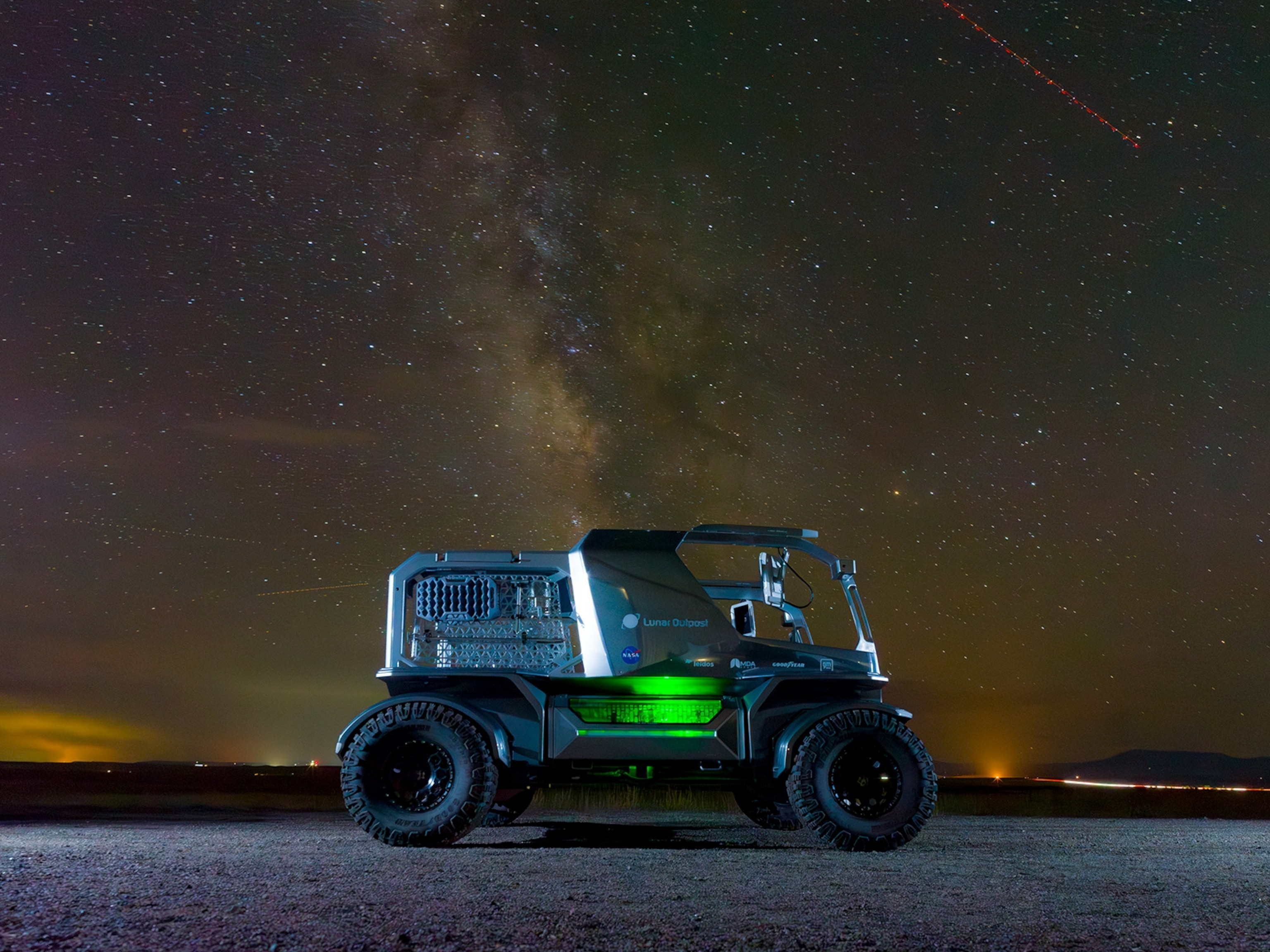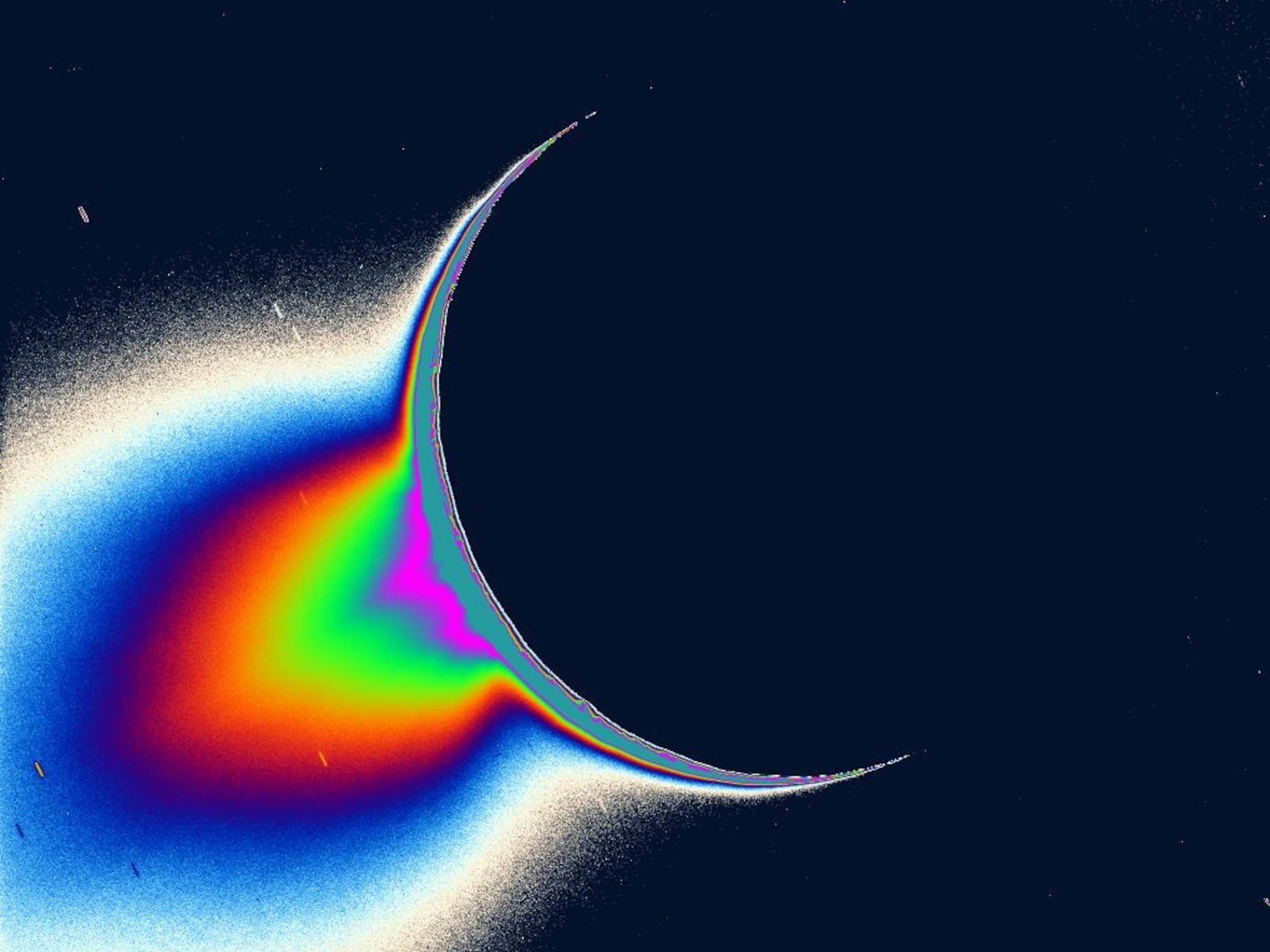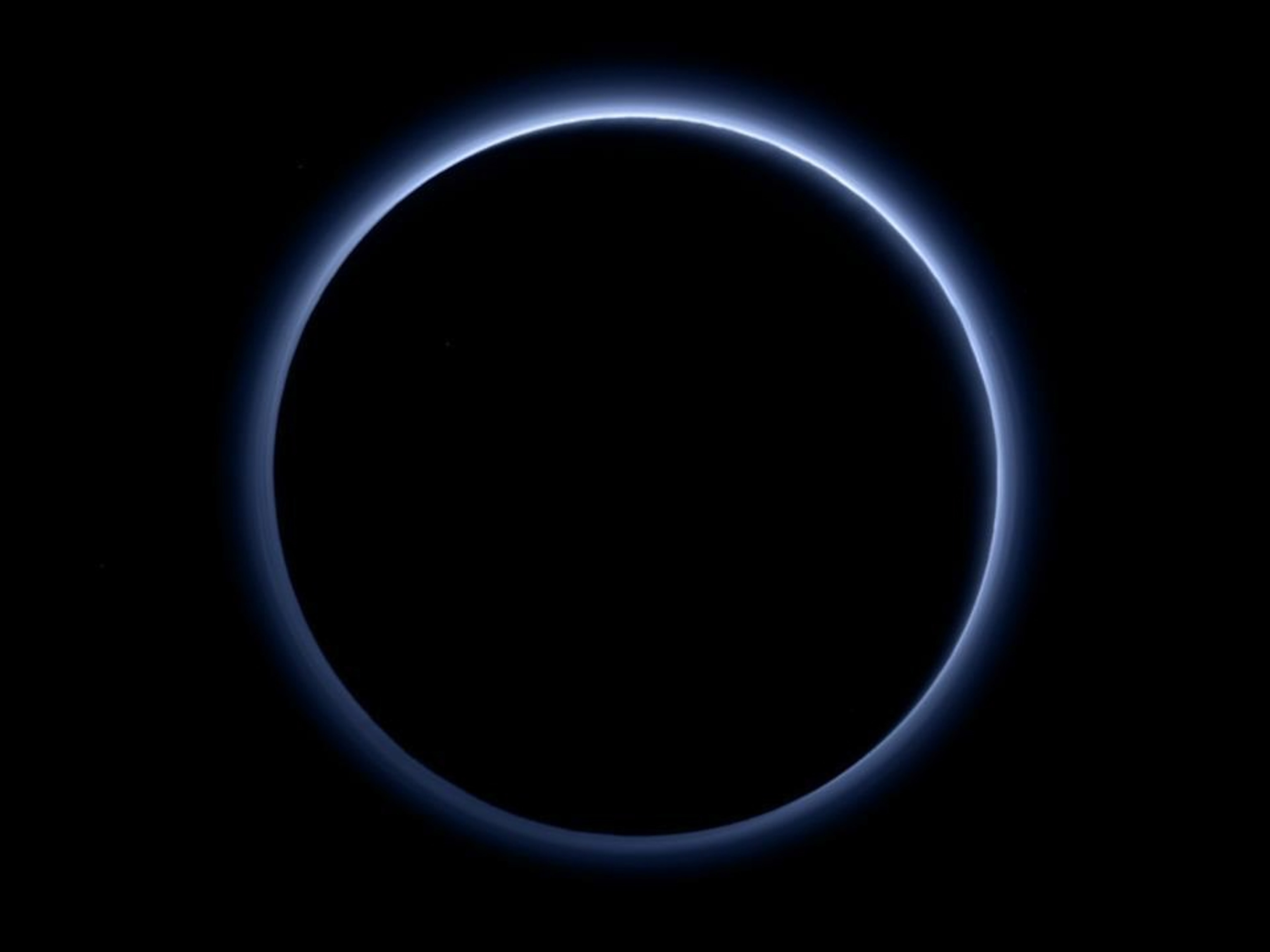
New Pluto Moon Found—"Fringe Benefit" of Search for Risky Rings
Unnamed natural satellite underscores Pluto's surprising complexity.
Only a year after Hubble Space Telescope scientists discovered Pluto's still unnamed fourth moon, they've found a fifth.
Finding the new moon this summer was a "fringe benefit" of a monthlong program to scan Pluto for rocky rings that could endanger NASA's New Horizons spacecraft, said planetary astronomer Mark Showalter, who's leading the Hubble scanning project. The probe is to fly by the dwarf planet in July 2015.
(Related: "New Pluto Pictures Unveiled; Hubble's Sharpest Yet.")
Even in the Hubble's best images, the new moon—some 3.7 billion miles (5.9 billion) miles from the sun—is visible only as a speck of light.
Based on its brightness, the temporarily named P5 is probably 6 to 15 miles (10 to 25 kilometers) in diameter—about two-thirds the size of P4, the Plutonian moon discovered in 2011.
The new moon adds one more level to the complexity of the Pluto system, which was already surprisingly complex for a world that's only two-thirds the width of Earth's moon, the team says.
(Related: "Pluto to Make a Star 'Wink Out' Twice.")
Pluto's "Russian Doll" Moons
At about 29,000 miles (47,000 kilometers) from Pluto, the new moon orbits in a 1:3 resonance with the dwarf planet's largest moon, Charon—meaning the newfound natural satellite takes about three times longer than Charon to circle Pluto.
Intriguingly, all of the other moons also lie in orbital resonances with Charon. Nix, discovered in 2005, lies in the 1:4 resonance. P4 lies in the 1:5 resonance. And Hydra, also discovered in 2005, is in the 1:6 resonance.
Showalter compares these orbits to the neatly nested shells of Russian dolls. With the new moon, he said, "We've got another shell."
"What we're finding is that, as we peer deeper into the system, each of these locations appears to have a moon in it."
Finding moons in these places, he added, lends support to astronomers' belief that Pluto was hit by "something pretty big" very early in its history.
"That broke off material, [most of which] coalesced to become Charon."
Leftover debris, he said, appears to have coalesced into smaller moons in "stable locations defined by the orbit of Charon"—the resonance orbits.
If so, he added, the best places to look for yet more moons might be the 1:2 or 1:7 resonances.
Bulletproof Mission?
"The discovery of so many small moons indirectly tells us that there must be lots of small particles lurking unseen in the Pluto system," New Horizons team member Harold Weaver, a Johns Hopkins University planetary scientist, said in a statement.
Because New Horizons will zip past Pluto at 30,000 miles (50,000 kilometers) an hour, even a BB-size particle could do serious damage.
So far, however, the Hubble images show no trace of rings, where such hazards might be concentrated, Pluto team leader Showalter said. "But we still have a lot more analysis to do."
If rings are discovered, it isn't the end of the mission.
"We have an alternative game plan," said planetary scientist Alan Stern, the New Horizons mission's principal investigator.
That plan—SHABOT (Safe Haven Bail Out Trajectory)—would steer New Horizons farther from its planned 6,200-mile (10,000-kilometer) closest approach to Pluto.
But the probe would still come "close enough to accomplish most of the mission's objectives," said Stern, of the Southwest Research Institute in San Antonio, Texas.
"We can make that change," he added, "as late as ten days before we get to Pluto."
Showalter adds that, in addition to being able to change course, the New Horizon spacecraft is armored in Kevlar.
"It's got a bulletproof covering," he said. "We don't have to be quite as paranoid as would otherwise be the case."





